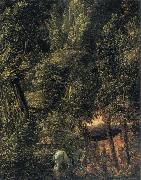Wholesale Oil Painting No Minimum |
|||||||||||
|
|
|||||||||||

|
|||||||||||
|
|
|
||||||||
MANTEGNA, AndreaItalian Early Renaissance Painter, ca.1431-1506 Italian painter and printmaker. He occupies a pre-eminent position among Italian artists of the 15th century. The profound enthusiasm for the civilization of ancient Rome that infuses his entire oeuvre was unprecedented in a painter. In addition to its antiquarian content, his art is characterized by brilliant compositional solutions, the bold and innovative use of perspective and foreshortening and a precise and deliberate manner of execution, an aspect that was commented upon during his lifetime. He was held in great esteem by his contemporaries for his learning and skill and, significantly, he is the only artist of the period to have left a small corpus of self-portraits: two in the Ovetari Chapel; his presumed self-portrait in the Presentation in the Temple (Berlin, Gemeldegal.); one in the Camera Picta (Mantua, Pal. Ducale) and the funerary bust in his burial chapel in S Andrea, Mantua, designed and probably executed by himself. His printmaking activity is technically advanced and of great importance, although certain aspects of the execution remain to be clarified. |
||||||||
|
|
||||||||
St George
St George Painting ID:: 32387 |
c. 1460
Tempera on panel, 66 x 32 cm c. 1460 Tempera on panel, 66 x 32 cm |
|||||||
|
|
||||||||
Albrecht AltdorferGerman 1480-1538 Albrecht Altdorfer Galleries He most often painted religious scenes, but is mainly famous as the first frequent painter of pure landscape, and also compositions dominated by their landscape. Taking and developing the landscape style of Lucas Cranach the Elder, he shows the hilly landscape of the Danube valley with thick forests of drooping and crumbling firs and larches hung with moss, and often dramatic colouring from a rising or setting sun. His Landscape with footbridge (National Gallery, London) of 1518-20 is claimed to be the first pure landscape in oil. He also made many fine finished drawings, mostly landscapes, in pen and watercolour. His best religious scenes are intense, sometimes verging on the expressionistic, and often depict moments of intimacy between Christ and his mother, or others. His most famous religious artwork is the The Legend of St. Sebastian and the Passion of Christ that decorated the altar in the St. Florian monastery in Linz, Austria. He often distorts perspective to subtle effect. His donor figures are often painted completely out of scale with the main scene, as in paintings of the previous centuries. He also painted some portraits; overall his painted oeuvre was not large. |
||||||||
|
|
||||||||
|
|
St George
St George Painting ID:: 39026 |
mk142
1511
Oil on panel
mk142 1511 Oil on panel |
||||||
|
|
||||||||
|
Albrecht Altdorfer German 1480-1538 Albrecht Altdorfer Galleries He most often painted religious scenes, but is mainly famous as the first frequent painter of pure landscape, and also compositions dominated by their landscape. Taking and developing the landscape style of Lucas Cranach the Elder, he shows the hilly landscape of the Danube valley with thick forests of drooping and crumbling firs and larches hung with moss, and often dramatic colouring from a rising or setting sun. His Landscape with footbridge (National Gallery, London) of 1518-20 is claimed to be the first pure landscape in oil. He also made many fine finished drawings, mostly landscapes, in pen and watercolour. His best religious scenes are intense, sometimes verging on the expressionistic, and often depict moments of intimacy between Christ and his mother, or others. His most famous religious artwork is the The Legend of St. Sebastian and the Passion of Christ that decorated the altar in the St. Florian monastery in Linz, Austria. He often distorts perspective to subtle effect. His donor figures are often painted completely out of scale with the main scene, as in paintings of the previous centuries. He also painted some portraits; overall his painted oeuvre was not large. St George mk142 1511 Oil on panel |
||||||||
|
|
||||||||
|
Prev Next
|
||||||||
|
|
||||||||
|
Related Paintings to Albrecht Altdorfer :. |
||||||||
|
|
||||||||
|
CONTACT US |


